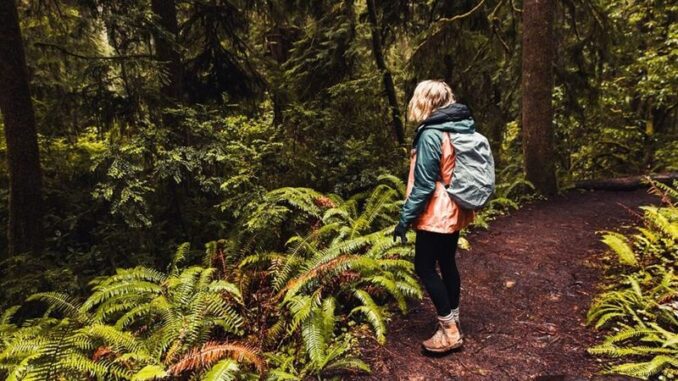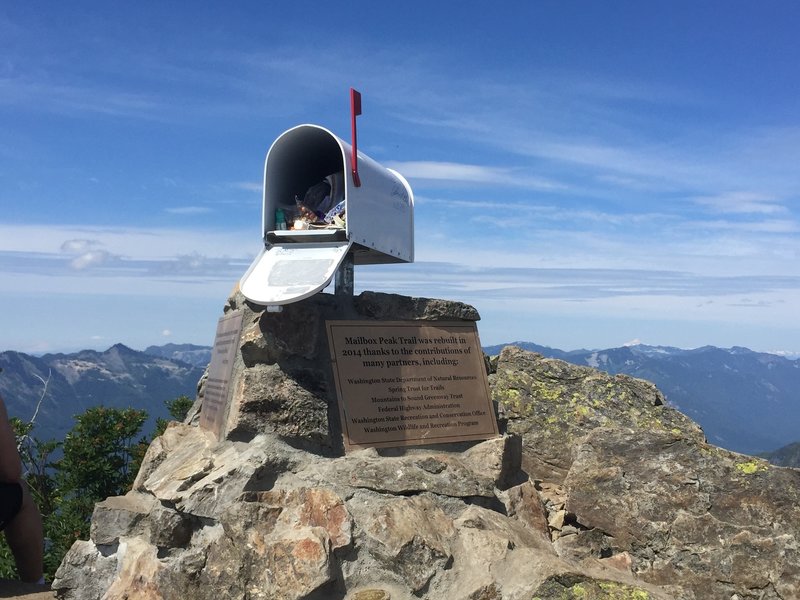
When the crowds thin, the colors shift, and the weather can’t decide what it’s doing, you know you’ve hit the shoulder season. It’s that unpredictable window between summer heat and winter snow when the Pacific Northwest turns moody, misty, and if you plan it right, magical.
Whether it’s early spring’s thaw or late fall’s drizzle, shoulder season is prime time for quiet trails, flexible itineraries, and the kind of solitude you rarely find during peak season. But it also takes some smart planning. Here’s how to gear up, stay safe, and make the most of Oregon and Washington’s in-between months.
Read the Forecast Like a Local
Pacific Northwest weather can throw a full four-season sampler in a single day. Always check the National Weather Service and local ranger reports before heading out, especially at higher elevations. A forecast that looks fine in Portland or Eugene might mean sleet on Mount Hood or hail in the North Cascades.
Pack rain gear every time, carry an extra insulating layer, and keep a dry backup of socks and gloves in a sealed bag. For higher elevation trips in spring, watch the freezing level as snow can linger well into June. In the fall, early snow can arrive as soon as mid-October.
Pro tip: Bookmark mountain webcams and SNOTEL telemetry sites. They give you real-time visuals of trail and snow conditions that are far more reliable than generic weather apps.
Remember that forecast models can’t capture microclimates. The west slope of the Cascades can be drenched while the east side glows under blue skies. Always have a Plan B at a different elevation or region.
Embrace Versatile Gear
Your best friend this season is versatility. The right gear can pivot between sunshine, sideways rain, and slushy snow without breaking your stride.
Here’s what to bring:
- Base Layers: Go for merino wool or synthetics that wick moisture and stay warm when damp.
- Shell Jacket: You want lightweight, waterproof, and breathable, so think Gore-Tex, eVent, or modern eco alternatives.
- Footwear: Waterproof hiking boots or trail runners with aggressive tread for mud and slick roots.
- Accessories: Gaiters for mud and snow, trekking poles for stability, and microspikes for icy mornings.
- Pack Extras: A lightweight tarp or emergency bivy can turn an unexpected storm into a minor hiccup.
If you’re paddling or cycling, don’t skip wetsuits, reflective layers, and headlamps. Shoulder season light fades early, and cold water demands respect.
Pick Trails That Match the Season
In the Pacific Northwest, elevation is everything. Many alpine trails like Jefferson Park, Paradise Park, or Artist Point can stay buried under snow well into June. By October, those same routes might be icy or inaccessible.
So pivot to shoulder-season sweet spots such as:
Spring Favorites
- Columbia River Gorge: Waterfalls are roaring, and wildflowers explode across Dog Mountain, Tom McCall Preserve, and Rowena Crest.
- Oregon Coast Trail: Cooler temps and fewer crowds make for perfect long-beach treks between Yachats and Florence.
- Silver Star Mountain (WA): Snow melts early here, revealing sweeping Gorge views and early blooms.
Fall Favorites
- Sisters Country: Crisp air, golden tamaracks near Camp Sherman, and quiet forest roads made for exploring.
- Silver Falls State Park: The waterfalls glow in autumn rain, and the crowds vanish after Labor Day.
- Mount Rainier’s lower trails: The Paradise and Sunrise areas might snow in, but the foothill trails near Longmire typically stay nice through November.
You can also explore Opal Creek Wilderness or Cape Perpetua Scenic Area for moody forest hikes with dramatic fall colors.
Always double-check trailhead access. Seasonal gate closures and storm washouts are common after heavy rain.
Weather & Water Realities: What to Expect, and How to Adjust
Shoulder season often means unpredictable elements. How you plan for them can make or break your trip.
- Spring melt chaos: Creeks and rivers swell erratically, snowfields may hide water underneath, and wet meadows can swallow your boots. Plan crossings at stable, low-gradient sections when flows are lower.
- Fall storm traps: Rain can turn into high water, slick rocks, or slides. Windstorms may knock down trees, and drainage zones can funnel dangerous water surges. Avoid narrow gullies in heavy rain, and be cautious of undercut log bridges or debris.
- Micro-weather in the Cascades: One valley might be dry while the ridge is blanketed in fog. Always check updated radar and local reports, as mountain weather can shift in minutes.
- Water sources: Filter wisely. In early spring, snowmelt can carry sediment; in fall, alpine creeks may start to freeze. Carry a filter or purification tablets—and always bring a backup method.
- Trail closures & seasonal gates: Many forest services close roads through winter or early spring. Check access ahead of time, since you may have added approach mileage before you even reach the trailhead.
Reading Trail Conditions (and Adjusting on the Fly)
Trail conditions in the shoulder season can change from dry dirt to icy sludge within a mile. Understanding what you’re walking into and how to adapt will keep your trip enjoyable.
- Mud vs. snow vs. dry inches: Know how your chosen trail behaves under different conditions. Be sure to recognize when bypassing a muddy section, like detouring via an old logging road, is safer than slogging through and damaging the trail.
- Log crossings and blowdowns: In the off-season, trails often take a beating. Be ready to scramble around fallen trees or switch to alternate spur trails.
- Trail compaction in snow: Following other hikers’ footprints can help with navigation, but don’t assume their path is safe. Snow bridges over creeks may collapse unexpectedly, and packed snow can hide ice beneath.
- Trail debris: After storms, expect everything from loose branches to eroded switchbacks. Bring trekking poles for stability and keep an eye out for washouts.
Adjust as you go. If your footing feels unstable or the weather turns, don’t hesitate to pivot. Choose a lower route, loop back early, or find a nearby forest road to finish safely.
Safety and Preparedness
Even seasoned hikers get caught off guard during shoulder season. Always tell someone your route and estimated return time, even for short day hikes. Cell coverage drops fast once you’re in the Cascades or Coast Range.
Carry a headlamp, a map, and a power bank. A personal locator beacon or Garmin inReach Mini can be a literal lifesaver if you’re exploring remote areas. Many rescues this time of year happen when daylight fades faster than expected or water crossings rise suddenly.
Mindset: Flexibility Is the Adventure
This season rewards those who can roll with it. Maybe your snow-free hike turns into a misty forest ramble, or a planned overnight becomes a scenic day trip. There’s beauty in foggy Douglas fir groves, in the scent of wet pine needles, in clouds breaking over ridgelines for five fleeting minutes of sun. The shoulder season asks you to let go of expectations, and when you do, it often gives you something better.
Pro tip: Keep an alternate plan folder in your notes app. List two or three backup destinations at different elevations or zones, like the Oregon Dunes, Willamette Valley foothills, or the Columbia Plateau. You’ll never have to cancel an adventure again. Instead, just redirect it.
Celebrate the Quiet
The reward for putting up with unpredictable weather? Peace and quiet. Campsites that book out months in advance often sit empty. Trails that were summer traffic jams are suddenly quiet except for the drip of rain on moss. Even iconic areas like Crater Lake, Olympic, and Rainier National Parks take on a cinematic and moody calm.
Bring a thermos of coffee, tea, or soup. Slow down. Watch mist lift off a lake. Shoulder season isn’t about big summits, it’s about small, grounding moments.
Respect the Landscape
Even when trails feel deserted, the Leave No Trace principles still apply. Stick to durable surfaces, avoid widening muddy sections, and pack out every scrap of waste. Shoulder-season hikers play a key role in protecting fragile trail ecosystems during recovery periods.
Final Thoughts
The Pacific Northwest doesn’t truly have an off-season. It just changes its rhythm. Shoulder season may be wetter, moodier, and less predictable, but that’s where the magic hides. Pack smart, plan ahead, respect the conditions, and you’ll discover what locals already know: that the forest belongs to those willing to show up when no one else does.



